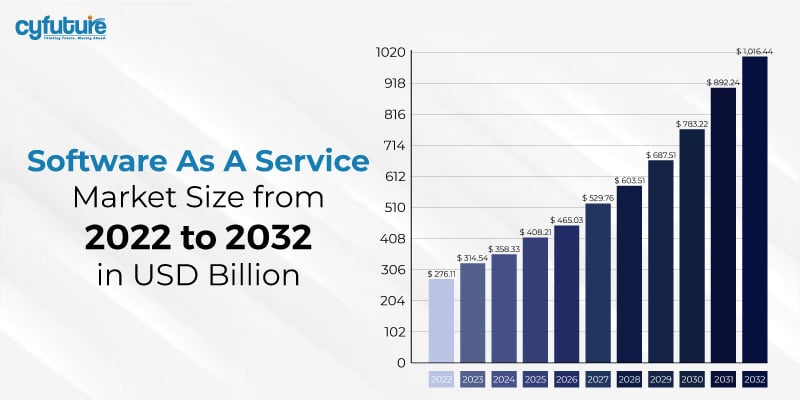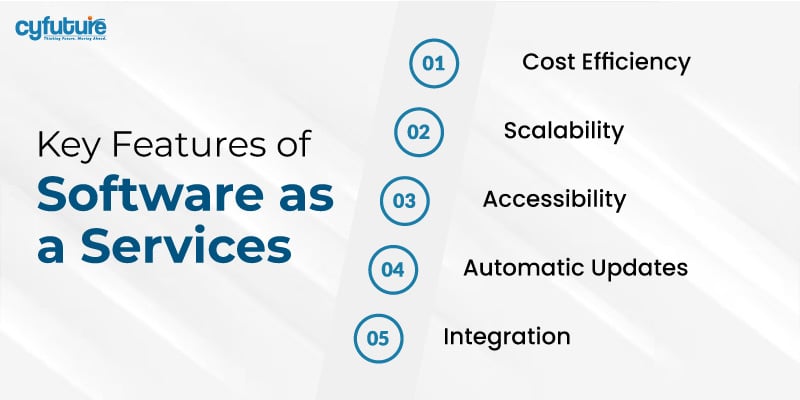-
Get Cloud GPU Server - Register Now!
Toggle navigation

Businesses are constantly looking for innovative solutions that will aid them to optimize efficiency and run their operations seamlessly. Today’s digital landscape allows access to powerful tools from anywhere globally for easy collaboration with team members. Additionally, resources can be scaled according to one’s needs without the extra cost that traditional software installs entail. Welcome to the world of Software as a Service (SaaS).
Have you ever wondered how SaaS cloud hosting can revolutionize your business operations? From the smallest startup to a large enterprise, this is no trend, but it’s a game-changer.
Nearly every industry has some portion of its business undergoing a digital transformation. Some sectors, such as legal technology and part of the supply chain, are finding their niches, while others, including fintech and consumer-facing e-commerce, are much more mature. What complicates, even sometimes hinders, the progress of digital transformation is the simple fact of the overwhelming choice in the technology space for executives and decision-makers.
Such appropriate technology selection would reduce operational costs, allow economies of scale in conducting business, and prepare for an ever more technologically dependent future. Here, SaaS stands as a trusted and effective solution to the needs of companies.
Today, in this comprehensive piece, we will discuss how SaaS could improve your business efficiency, the advantages of hosting on the cloud with SaaS, and why transitioning to hosting on SaaS is probably the smartest decision you’d ever make.
However, let’s look at a few stats and data before delving deep.

Now, let’s delve into the deep knowledge pool!
Software as a Service, or SaaS, is a new software delivery model for deploying applications over the internet. In a SaaS hosting model, applications are hosted centrally by a service provider and made available to users over the internet.
Unlike the traditional ‘software-only’ method of delivering software wherein it has to be installed on individual computers, applications in the SaaS cloud hosting model can be reached through web browsers to achieve maximum accessibility and collaboration in general.

There are several key reasons to drive the Software as a Service adoption, some of the prominent ones are as follows:
It saves from costly hardware and software installation. With a subscription-based model, it provides scope for business entities to trim down the heavy expenses right at the very beginning and only pay for the use.
As your business grows, Software as a Service (SaaS) solutions can scale up to meet rising demands. Your software infrastructure stays in sync with your needs and expectations.
With access to applications based on SaaS from anywhere in the world where an internet connection is available, remote work and collaboration are supported.
Third-party providers do software updates and maintenance so you always have the latest available feature or security enhancements.
SaaS Applications are packed with APIs and Integrations that let you link with other business tools and systems in a seamless and streamlined way.
Whether you run a startup or a well-established business, there is always room for improvement, space for more efficiency, and assurance that you do not burden employees when training them to work efficiently.
You may get many innovative ideas and suggestions for the growth of your business, but all those ideas are only useful to execute a plan perfectly.
It has become a habit for companies that already work with a goals-based framework, to focus on the most critical business goals at any given time (preferably over the next three months). The team goes out with leaders to discuss and decide on individual goals or OKRs for everyone. Furthermore, they ensure that the people get together routinely to ensure they are on the same page.
Clearness enhances the productivity of employees. The lack of clearness regarding the expectation has been one of the real company problems. Although, one can save a lot of time by stream-lining the goals management process.
Use the technology to solve time management problems. Who knew that people could work from home for months and even be productive?
The application of project management and collaboration tools facilitated the connectedness of professionals and the provision of practical work. The use of technology products and services creates other problems for the organizations, such as using many tools all at once.
You solve this by moving as many operations and functions onto only a few software platforms.
Employee management software lets you manage employee data, approvals, hiring, onboarding, offboarding, attendance, leaves, payroll, etc. All this in one place. Can you even think of how much time and money it could save you?
Humans are still required to do some activities.
You can’t always allow your prospects to see a product demo, for instance. To understand their requirements and provide the best answers, a person must speak with them one-on-one.
The following processes and tasks can be automated:
Cutting expenses not only helps businesses become successful but also helps startups operate longer. It also increases the fundability of your project.
Investors like it when a company can turn a profit with less money.
With the correct Software as a Service (SaaS) tools and fewer in use, you may save expensive charges.
Software with AI capabilities and some automated processes reduce the amount of time and money spent.
Examine how much money you may save by using tools for financial management. The tool might provide information on areas where you can cut expenses.
Effective teams actively collaborate, particularly at expanding SaaS hosting firms. In small teams, working together at the same location to do tasks is acceptable.
But you have to start employing software as the team grows and employees are working in hybrid models. Quick collaborative planning tools, performance management tools, and the well-known OKR management framework rule the competitive collaboration software industry.
In order to better control the team’s performance, this method operates using goals. The goal is to continuously assess and provide feedback to enhance each person’s performance.
It is far more beneficial for the staff to know their development in real time rather than having to wait a year or six months. Combining this technology with the OKR management platform would be the best use of it, allowing each team member to monitor their own progress and participate in regular check-ins.
An important area of expansion for early-stage companies is this.
But unless you define your buyer persona, how can you market your goods or services? And the only way to keep your customers is to provide prompt and efficient customer service.
You can capture every piece of consumer data and even offer excellent customer service with a lot of tools. Hubspot may be used for customer service management and buyer persona creation.
In a nutshell, the potential of Software as a Service to transform is immeasurable. With businesses increasingly migrating to a digital model, the SaaS version has become an absolute necessity that will streamline operations and realize unprecedented efficiency. This scalable solution with automatic updates and increased collaboration somehow frees up organizations from the burden of traditional software.
SaaS cloud hosting lets companies adapt quickly to the varying demands thrown at them. Beyond remarkable cost savings and integration abilities, SaaS also stands as a strategic imperative for the enterprise to optimize resource allocation. Considering the boom market-one projected to cross $1 trillion by 2032-the rate at which SaaS hosting is catching up is unfathomable.
Although, adopting SaaS hosting is going to bring you more than cutting-edge resources in the business; it’s going to throw you into the future where agility and innovation are everything. In that respect, it’s not so much a decision of choice into SaaS; instead, it represents an astute move toward achieving ultimate, enduring competitive advantage in the rapidly increasingly interconnected world.